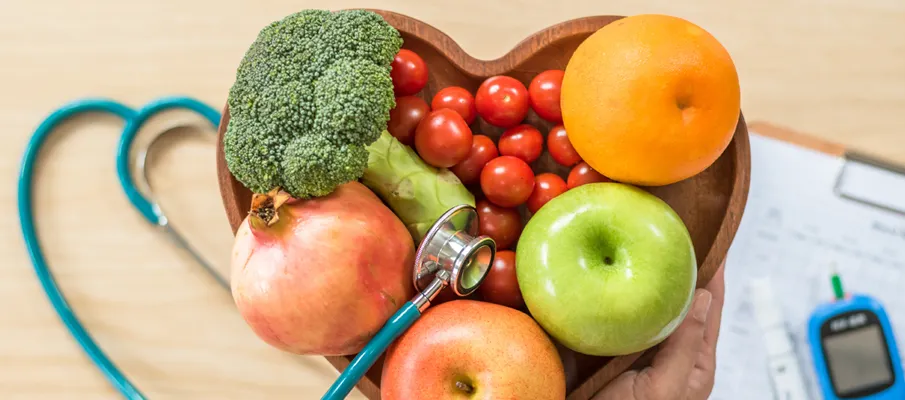U’re like most people, you probably know that cholesterol is something you want to keep in check. However, your body needs some cholesterol to protect your cell membranes and help produce important hormones. Still, too much of it can negatively impact health.
Let’s review what cholesterol is, what cholesterol is made of, the role it plays in your body, and ways you can support healthy cholesterol levels.
What is Cholesterol?
Cholesterol is a waxy substance found in all of the cells in your body and comes from two sources. Your liver makes cholesterol, and you also get cholesterol from animal-based foods that you eat. These foods may include meat, seafood, poultry, eggs, and dairy products.
Your liver makes adequate amounts of cholesterol to support your body’s requirements. Therefore, if you’re eating an excess of high-cholesterol foods, your body can potentially be overloaded with cholesterol. As a result, you may have high levels of cholesterol circulating in your blood, which can negatively affect health.
What Does Cholesterol Do?
Now that we’ve learned about cholesterol, you may wonder, what does cholesterol do in your body? Cholesterol is a critical building block in producing and protecting your cell membranes. Additionally, cholesterol is needed to make important hormones, including testosterone and estrogen, and to make Vitamin D. Moreover, producing bile acids in your liver to aid digestion could not be possible without the help of cholesterol.
Types of Cholesterol
When talking about cholesterol, you often hear the terms “LDL” and “HDL.” These lipoproteins are responsible for carrying cholesterol throughout your body in the blood.
LDL cholesterol
LDL stands for low-density lipoprotein and is often referred to as “bad” cholesterol. High levels of LDL in your blood can lead to the accumulation of plaque on your artery walls and the narrowing of blood vessels.
Ideally, LDL cholesterol is below 100 mg/dL to help support a healthy cardiovascular system.
HDL cholesterol
HDL stands for high-density lipoprotein and is often referred to as “good” cholesterol. HDL cholesterol removes the harmful LDL cholesterol from your body by clearing it from your arteries and sending it to your liver, where it’s broken down and eliminated from your body.
When your HDL cholesterol levels are 60 mg/dL or higher, they are considered cardio-protective and can help support a healthy cardiovascular system.
VLDL cholesterol
VLDL stands for very low-density lipoprotein and is another “bad” cholesterol type. VLDLs transport triglycerides and cholesterol in your blood and have been linked to plaque buildup within the artery walls.
VLDLs are difficult to measure and are not typically included in a routine cholesterol test. However, part of your VLDL levels are triglycerides, so a lab will frequently use your triglyceride levels to estimate your VLDL levels.
Getting Your Cholesterol Levels Checked
If you’re over the age of 20, the American Heart Association recommends that you have your cholesterol levels checked every 4 to 6 years. However, some people may need to have their cholesterol levels checked more often if they have a history of high cholesterol or other risk factors.
Checking your cholesterol levels is simple and involves taking a blood sample that your healthcare professional will send to a lab for analysis. The test measures your total cholesterol level (the overall amount of cholesterol in your blood), LDL cholesterol, HDL cholesterol, and triglyceride levels (a type of fat found in your blood).
Cholesterol levels are measured in milligrams per deciliter (mg/dL). The following are optimal levels of cholesterol for most adults:
- Total cholesterol: Levels below 150 mg/dL
- LDL cholesterol: Levels below 100 mg/dL
- HDL cholesterol: Levels above 40 mg/dL for men and above 50 mg/dL for women
Factors Affecting Your Cholesterol Levels
Age
As you get older, your body doesn’t remove “bad” cholesterol as effectively as it did when you were younger. As a result, your cholesterol levels will often rise as you age.
Family History
Your genes can partially determine how much cholesterol your body makes. For example, familial hypercholesterolemia (FH) is a genetic disorder that affects about 1 in 250 people and increases the amount of LDL cholesterol circulation in the blood.
Diet
The cholesterol, saturated fats, and trans fats in the foods you eat may increase your blood cholesterol levels. By reducing or limiting your intake of foods like red meat, dairy products, fried foods, baked goods, and ultra-processed foods, you may be able to help lower your cholesterol levels.
Exercise
A lack of physical activity can raise your cholesterol levels, while engaging in some kind of exercise can help lower LDL (bad) cholesterol and raise HDL (good) cholesterol levels.
Smoking
Smoking has been shown to lower “good” HDL cholesterol and raise triglyceride levels in your blood.
Supporting Healthy Cholesterol Levels
Reduce your intake of unhealthy fats
Saturated fats and dietary cholesterol are derived primarily from animal products like fatty meats and dairy products like cheese and butter. Limiting your consumption of these types of foods can help support healthy cholesterol levels.
Additionally, limiting foods that are high in trans fats like margarine, vegetable shortening, fried foods, and some ultra-processed foods can also help support healthy cholesterol levels.
Focus on healthy fats
Both polyunsaturated and monounsaturated fats can help support healthy cholesterol levels. Many plant-derived oils, olive oil, canola oil, and avocado oil contain both. Additionally, you’ll find healthy fats in seeds, nuts, avocados, and fatty fish like salmon, tuna, trout, herring, and mackerel. In fact, the American Heart Association recommends eating 2 servings of fatty fish per week.
If you’re not eating the recommended amount of fish per week, you may consider the wide variety of Garden of Life’s purest, highest-quality Fish Oil omega-3 formulas. These fish oil supplements can support healthy triglyceride and cholesterol levels already in the normal range.†
Increase fiber intake
Eating foods rich in fiber can help support healthy cholesterol levels. The soluble fiber found in fresh fruits and vegetables, whole grains, flaxseeds, legumes, and beans can help prevent the body from absorbing LDL cholesterol.
Limit alcohol intake
Heavy alcohol use can increase LDL (“bad”) cholesterol and triglycerides levels. If you drink alcohol, try to do so in moderation. For healthy adults, that means up to one drink a day for women and up to two drinks a day for men.
Exercise
Exercise is one of the best things you can do to support your overall health and well-being. Not only does it improve physical and mental health, but it also reduces harmful LDL and increases helpful HDL cholesterol levels.
The American Heart Association recommends at least 150 minutes of moderate aerobic exercise per week to help support healthy cholesterol levels.
Takeaway
Cholesterol supports many important bodily functions like cell membrane protection and hormone production. However, having high levels of LDL cholesterol can negatively impact your health.
While many uncontrollable factors can affect your cholesterol levels, like age and family history, there are factors that you can control to help support healthy cholesterol levels. These include limiting your intake of unhealthy fats, focusing on healthy fats and high-fiber foods, and exercising regularly.
By understanding what cholesterol is and its effect on your health, you can make informed decisions about your diet and lifestyle to support your overall well-being.



